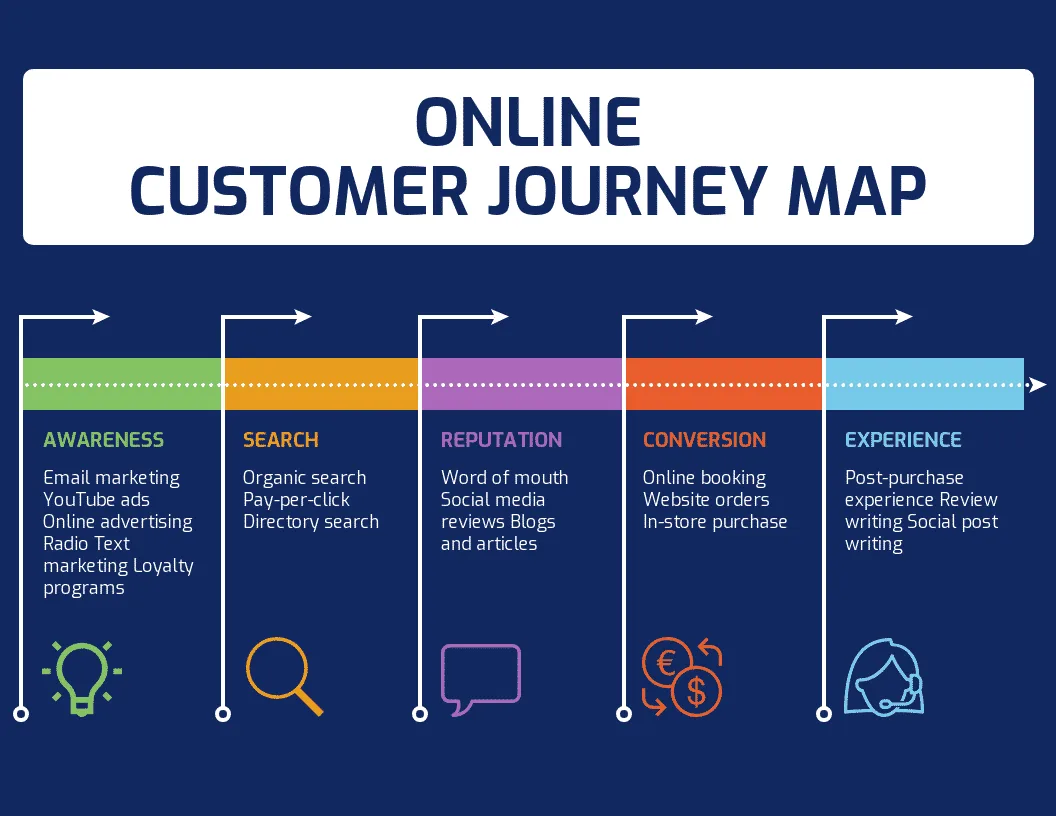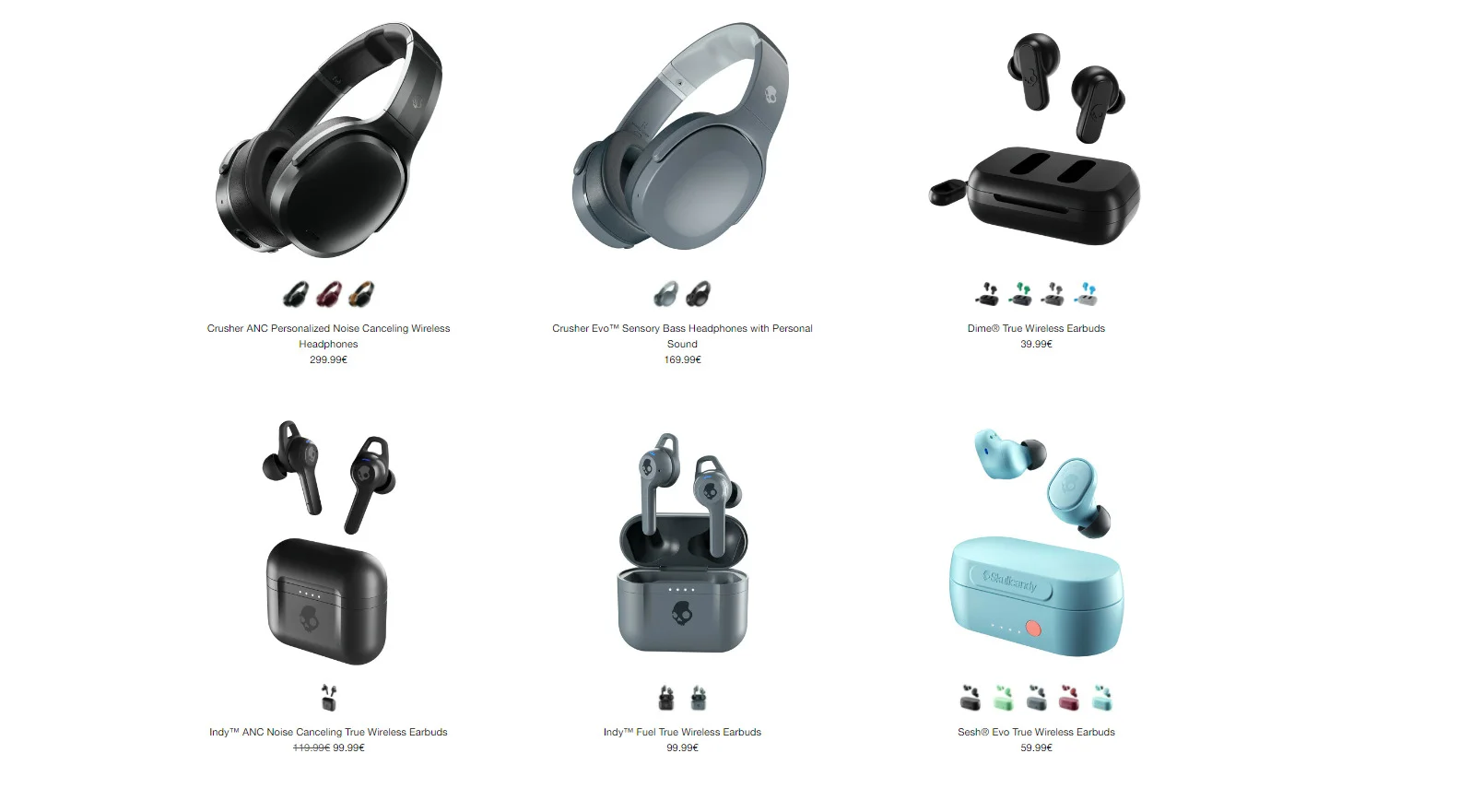How to Make Sense of the Ecommerce Customer Journey

No one can deny how big the ecommerce market is. Global ecommerce sales are projected to nearly double to $6.5 trillion by 2023. Its share of total retail sales is also growing, particularly in the wake of the COVID pandemic.
So we know the sector is massive, but how complicated is it? Surely it is just a simple matter of finding the product you want, buying it, then waiting for delivery. Or is there far more to the ecommerce customer journey? There are multiple factors, from lead times to customer service, that makes an ecommerce business a good ecommerce business (or not).
Modern business, especially ecommerce, is about identifying and utilizing the best tools available. And that covers everything from live video conference software to good CRM management systems.
Smaller businesses need to find such tools without breaking the bank. Fortunately, they can choose from the best free business apps that will provide great service without denting the budget. Having the ability to be agile and to adapt to changes can be a major positive for your business.
If you look at a successful online retailer such as Larq, you will see a well-constructed site that is easy to navigate and that also offers links to their various social media platforms. This is a good example of how an ecommerce site should look. It shows they have looked at the customer journey and optimized their site to make it a positive one.
You need to know each stage of that journey, how those stages affect customer experiences and their relationship with you, and how you can improve the journey at every level and customer touchpoint. Let’s look at how the customer journey unfolds and what factors of customer journey mapping that are important for you to understand.
What is the Ecommerce Customer Journey?
That quote about life from Ralph Waldo Emerson can also be applied to ecommerce businesses. While it is easy to think about the destination—that purchase arriving in the customer’s hands—it is also very much about the journey and what happens en route to that final destination. Just as with life’s journey, every stage of the ecommerce journey has its own features and qualities.
Our customers no longer buy just a product, they buy the whole experience of being a customer, they buy your brand qualities, your mission and values, and more. They buy into the ease of your processes, the information you provide, the convenience, the quality of your aftersales (and presales if needed) customer service. In short, they look at the whole package you offer.
We all do process mapping for our businesses as a matter of course, so we should be doing the same for the customer experience. You need to understand every aspect of how your business operates, from dealing with logistics to ensuring your customers are happy.
And do not be afraid to use shortcuts. The very reason tools such as templates are offered is to make it easier for you to conduct business. They can save you time and money and it can be easy to find one that suits you.
It is not only the price of something that matters to them, it is everything that surrounds it, including how they access your site or app (and how easy it is to use), how you communicate with them across different channels, possibly even using companies like Slack, and how quickly you respond to their inquiries. In short, it is about providing an ecommerce customer journey map that meets all of their needs.
Focus not only on your customers’ journeys, but also on their relationship with you; that’s important whether you are a small business or a large international one. Investing in customer relationship management (CRM) software is highly advised, especially when you have a multichannel or omnichannel business.
There are also other aspects to consider. Many people now ask ‘what is affiliate marketing’, as offered by MaxBounty, and what is its place in online retail? If you use a strategy such as affiliate marketing, then you need to make sure that a customer’s journey is consistent across all the options open to them. Whether they find you via your own channels or through an affiliate.
5 Stages of the Ecommerce Customer Journey
So we recognize that the customer journey is far more than a simple buying process. We also recognize that we need to know how to develop a successful ecommerce fulfillment strategy that helps us win and retain customers. Knowing the main stages of that journey is essential to both mapping it and ensuring that it is as optimized as possible.
And when a business operates across many channels (omnichannel or multichannel), you need to recognize that their journey may differ greatly depending on which channel they are using.
1. Awareness.
Every journey has a starting point, and in the ecommerce business, that starting point is awareness. This is the stage where the customer discovers your product/service and your brand. This is also where you discover how they found you. Did they find you via a search engine (thus validating your SEO strategy)? Did they see an ad on social media or in a more traditional medium?
You can not only see where they came from but also what behaviors they are showing once they have ‘arrived’. Do they look at particular landing pages that give you an idea of what products they are interested in? You could also describe this as the first learning stage; the customer is learning about your business and you are learning their preferences and needs.
2. Consideration.
In this stage, the customer begins to show real interest in particular products or services and move beyond general browsing. For example, with a cosmetics company such as Bliss World, they may start looking at the vegan skincare range, letting you see that this is their specific interest product-wise.
From your organization’s perspective, this stage of behavior allows you to analyze what works and what doesn’t. Those analytics can help you reduce bounce rates and encourage further investigation by the customer.
3. Conversion.
One of the magic words in ecommerce, but this stage is not always a guaranteed sale. In some cases, this stage can include those customers who have added a product to their cart (or to their wishlist) but have not yet proceeded to actually buying it. In most cases, though, we do consider this to be the stage at which a prospective customer becomes an actual customer who adds to your conversion rate.
It is at this stage that you as a business have to begin delivering on any promises you may have made to get the customer to this point. Part of that delivery is making sure all your processes, such as marketing, sales, customer service, etc., are aligned and are delivering the same message and quality of service.
4. Retention.
Another of those magic words. Having a customer make a single purchase is satisfying, but having them return again and again to buy is even more satisfying. This means they are very happy with most or all aspects of their journey and experience to date. From this point they begin to exhibit brand loyalty and may always look at your site before others.
The thing for businesses to be aware of at this stage is that providing an excellent experience once is fairly easy, but providing it time and time again is where the challenge lies.
5. Advocacy.
This stage is the Holy Grail of the customer journey but do not expect to achieve it with every customer. Most companies fall short at stage four, but those who do manage to retain customers are then hoping that those people become advocates and brand ambassadors with a high lifetime value. At this stage, your best customers are not only buying but interacting at a high level.
They will interact with you across most if not all of your touchpoints, such as your homepage, any blogs, social media, etc. More importantly (from your marketing perspective), they will be sharing information that you post on their own platforms and will actively advocate and talk about your products/services. That can also include recommending you to people and writing reviews.
Building an Ecommerce Customer Journey Map
An ecommerce customer journey map is a visualization of all the potential experiences a customer may have with your organization. Such a map also highlights the sequences those experiences are most likely to occur in. It can allow you as a business to identify strengths and weaknesses, and thus make improvements where needed.
That customer journey may consist of all the stages we previously listed or they may only cover some of them, if customers do not move to later stages. What you need to focus on is that a customer journey map will show you all the possible permutations of what the customer experiences, whether only one or two stages or all five.
How Do You Build Ecommerce Customer Journey Maps?
Being able to map the customer journey offers many benefits, but if you have never undertaken this exercise before, where do you start? What things do you need to consider before starting?
1. Perspective.
The first important thing to note is that you need your map to be from the customer’s perspective. So, detach yourself from your professional role and start the process as if you were an everyday customer. This can also help you understand the overall customer persona.
To do so, pick a product or service your company offers. Use various terms on search engines to see what results come up. Read any associated material including reviews, articles, and blogs. Then visit your actual site to view the product there. Take notes on how the various customer touchpoints felt and how the experience of visiting the site unfolded.
2. Research.
Put together a focus group that consists of your main demographic targets. Ideally, they will not know what company or brand has formed this group. Pick one of your products or services and ask the focus group to find and buy that item online. Observe and record how they find the item, what paths they take, and what outcomes unfold.
Once the focus group has finished their exercise, take the results and compare them with your experience from part one. By analyzing the two exercises, you can see if you and your customers think in the same way, and will also have a wider overview of touchpoints and interactions.
3. Understanding.
You now have a better overview of how customers interact with your business and how the various touchpoints perform. You now need to understand what those various actions mean in terms of engagement strategy. Did any touchpoint perform particularly badly? By analyzing the information you have collected, you can see what action you need to take next.
Your aim is to have your ecommerce site performing at an optimum level at every touchpoint you (and your customers) have identified. Those touchpoints can range from your own site to your social media platforms to search engine rankings. They can also include independent touchpoints such as review sites.
4. Goals and pain.
You now have some of the foundations of your customer journey map in place. But it is more than just identifying the touchpoints and engagements you have observed. You also need to understand the goals of the customer and the pain points they experience. It can help greatly if you list some of the insights gained from your observation and data collection:
Goals. What is the customer’s ultimate goal(s)? What is it they want to achieve?
Emotional response. What parts of the process make the customer happy? Or what elements make them unhappy or frustrated?
Pain points. What things cause issues for the customer and would they like to see improved?
5. Visualization.

You should now have enough (likely a lot) of information that tells you what the customer experiences. The problem is that this information is not easy to digest, so you want to simplify it and create a visual that is easy to look at and understand. How you format it will depend very much on your own specific business model.
You may decide to create more than one visual, especially when you are a larger company and may have different teams working on different areas. For example, if you have a dedicated social media team, you may decide to create a journey map that particularly pertains to social media touchpoints, pain points, experiences, etc.
Why is the Customer Journey Important?
Do you really need to make a customer journey map? What benefits does it bring you? Knowing why it is important is as crucial as understanding the whole process itself. There are many reasons why it is not only important, but should be an integral part of your ecommerce business.
Efficiency. It can help you streamline the customer experience and journey by identifying if there are too many steps or touchpoints between the customer starting their journey and ending it.
Effectiveness. Does the required journey make sense to your customers? Acknowledging that we all do things differently, from how we search to how we navigate a site, creating a process that has a general effectiveness for most is a major benefit of a customer journey map.
Understanding. Knowing and understanding your customers, how they think, what they need, what they like and don’t like, is another crucial factor in determining how to create the best possible customer journey. In fact, this is an area where many organizations fail as they focus more on creating the perfect journey for them, rather than their customers.
Setting goals. A good customer journey map can help you identify and set better and more realistic goals. The combination of a human perspective and the hard data you have collected ensures you are more in touch with what makes your business thrive and grow. It also helps you monitor and tweak in real time as you move forward.
Planning. Every business has one eye on the future; new products and services, expansion, etc. Having an accurate customer journey map, and understanding it, means that you can more accurately focus on those future events.
Reducing pain. Pain points are the bane of any online stores and can lose you customers if not identified and remedied. You may be surprised by how many pain points exist once you have completed your journey map. Once you have identified them, you can take action to remove them or to reduce their effects.
How Ecommerce Stores Can Improve Their Customer Journey
For companies looking closely at their customers’ journeys for the first time, it can sometimes be daunting when flaws and gaps are identified that are having a very real effect on your business. Mapping the customer journey is one thing, but knowing how you can act on the data you have identified and improving the customer journey and experience is another.
1. Create touchpoints at every stage.
Anywhere a customer interacts with your brand is a touchpoint. Seeing an ad, visiting your site, looking at independent reviews, contacting your business to find store locations, and finally making a purchase. All of these are touchpoints. Going back to the five stages of the customer journey we discussed earlier, you need to have touchpoints for each stage.
Each touchpoint serves a purpose and plays its part in optimizing the overall customer journey. So each touchpoint you create has to fulfil its specific purpose (ad attracting interest, checkout process quick and uncomplicated, etc.) Ensuring you have multiple touchpoints that fit their respective stages and work properly is essential.
2. Optimize your website for every device.
It is worth remembering that around half of all internet traffic originates from mobile devices. So if your website performs poorly when accessed from a mobile device, you are in effect alienating half your potential customer base. Optimization is key to offering a good experience to all.
It can help to look at great websites that are well optimized, such as Skullcandy, so you can see what is needed. The screenshot below shows how well you can view their products from a mobile device, making online shopping easier for customers.

And there are a few factors to take into consideration when optimizing your site:
Test your site. Knowing your site works well on mobile devices is absolutely crucial. You can do this manually at first simply by accessing your site via several different devices. Look especially at loading times and how the site looks on a small screen. For more in-depth testing, use Google’s free testing tool.
Web host. Make sure your web host offers the speed and resources required to make your site fast and responsive. A slow and unresponsive home page and website will put customers off. You also want a host that guarantees the minimum of downtime.
Apps. Consider launching an app to complement your website. They are not as expensive as you think and they can help boost both sales and engagement.
3. Use proactive customer support.
Don’t wait for problems to happen and for customers to contact you. Anticipate the problems or questions most likely to occur and provide answers and solutions that will keep your customers happy. Offering proactive customer support has a number of benefits.
Better customer retention rates. Being proactive means you’re more likely to have happy, loyal customers.
Less calls to your support team. By solving problems proactively, customers can see the solutions themselves and thus will make less calls to you, freeing up your team to deal with more complicated queries and also reducing waiting times.
More first time customers. People talk about the good service they receive and that includes proactive support. When satisfied customers share their experiences, that can lead to new first-time customers.
Increased productivity. Proactivity means better communication. And that means your team has more time to listen to and help customers who call and to collect more information and data.
Communication. You are probably already using video and messaging collaboration tools for sales teams, so why not ensure you also have great tools to communicate with customers. Chatbots and AI are great ways of proactively helping your customers find information.
4. Personalization is key.
It is neither a secret nor a surprise that people like a personal touch, and that is true whether in ‘real life’ or in online shopping and ecommerce marketing. That means going beyond using their name (which you can do with website automation or in marketing emails) and also recognizing their particular interests and buying habits.
Using tactics such as dynamic content marketing, which can customize content according to buying preferences, location, age, gender, etc., means you are offering a personalized approach that can lead to increased sales and better customer retention. Automation and analytics can be the two drivers when it comes to personalizing the customer journey, so use them wisely.
Smaller businesses may feel they could be overwhelmed by these demands, but with so much technology and automation available on a budget, it is not that difficult to do. There are many mobile apps for small business owners that can help with factors such as communications and social media posting, so see what tools can both help you and save money that may be spent elsewhere.
5. Gather data as much as possible and be flexible.
Data is not a one off exercise. Collect as much data as possible in the early stages, but keep collecting it always. Collect data not only on customer behavior and the customer lifecycle, but also general info via surveys, polls, etc. on your social media platforms and via email. The data you collect is a hugely important resource and offers you several benefits and potential uses.
And it is, of course, not just about collecting data, but about analyzing it and interpreting it efficiently. Consider using one of the many tools, such as Google Analytics, to help you with this. Identify what metrics, such as KPIs, matter most to you. A good KPI helps show your business is healthy.
Data is not just a collection of information, it offers tangible benefits that can help your business grow by developing strategies for the future.
Understand the market. Collecting and analyzing consumer data helps you understand how your ideal customers behave online. It helps define and segment particular demographics, understand better what customers want, and see ways to improve the overall experience throughout the customer lifecycle.
Expand your database. The more information you have on customers, the bigger, and more efficient, your database is. And with detailed data, you can segment your customers (and potential customers) into groups that make more personalized strategies, such as dynamic content marketing, easier to achieve.
A larger database allows you to use a variety of strategies. For example, instant messaging can be a great way to boost your ecommerce sales.
Better marketing. By constantly collecting data, you get better insights into which of your marketing strategies and campaigns have worked well. The more data you have, the easier it is to identify which sorts of campaigns are best, and what platforms reach more of your ideal customer base and generate more leads.
Those campaigns could be via social media or you could identify what sort of email campaigns best drive sales.
Conclusion
Customer relationship management is perhaps one of the most important factors for ecommerce businesses to consider and it is worth investing in good CRM software to help with this. You may understand the customer journey, but managing that journey on an ongoing basis is a big task.
Aim to be consistent and to ensure you provide the same positive customer experience throughout every journey. Your online store has to be as accessible and helpful as any physical store would be. And that applies to every channel, platform, and touchpoint where your customers interact with you.
Ecommerce businesses range from massive multinational corporations to small solo entrepreneurs. Customers range from occasional purchasers of low value items to regular buyers of high value goods. No matter who you are or who they are, you should be aiming for parity so that every journey and experience is positive.

Pohan Lin is the Senior Global Web Marketing Manager at RingCentral, a global UCaaS, VoIP and video conferencing solutions providers. He has over 18 years variety experience in web marketing, online SaaS business and ecommerce growth. Pohan has a passion for innovation and communicating the impact that technology has in marketing.


